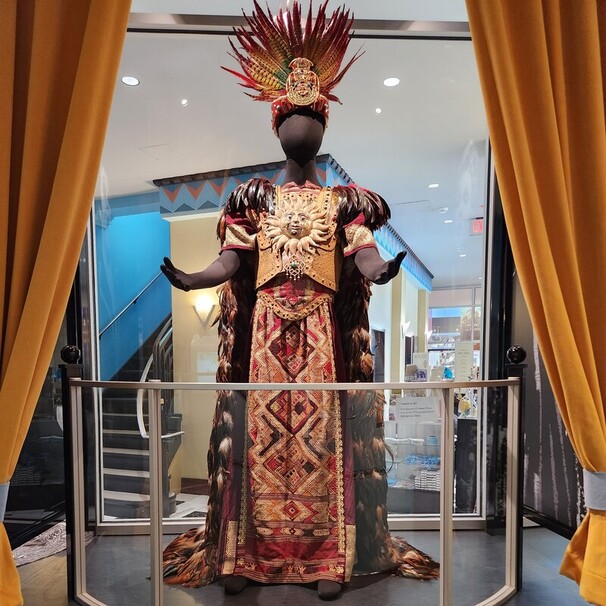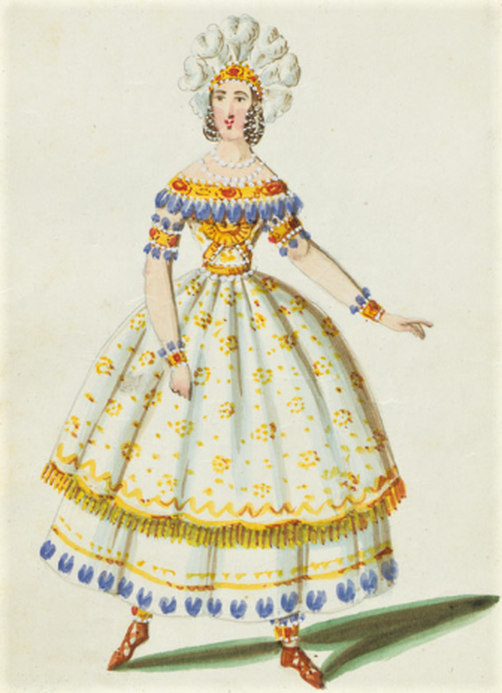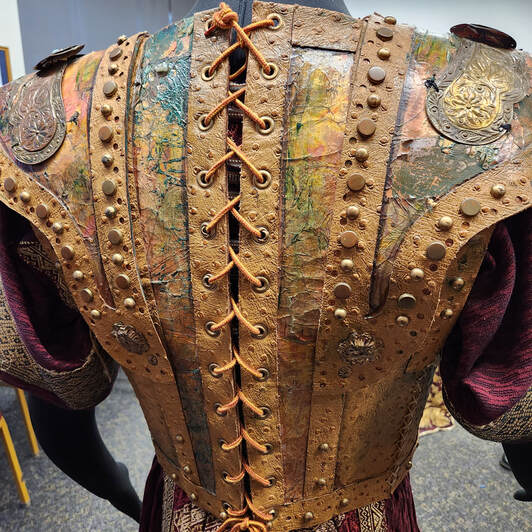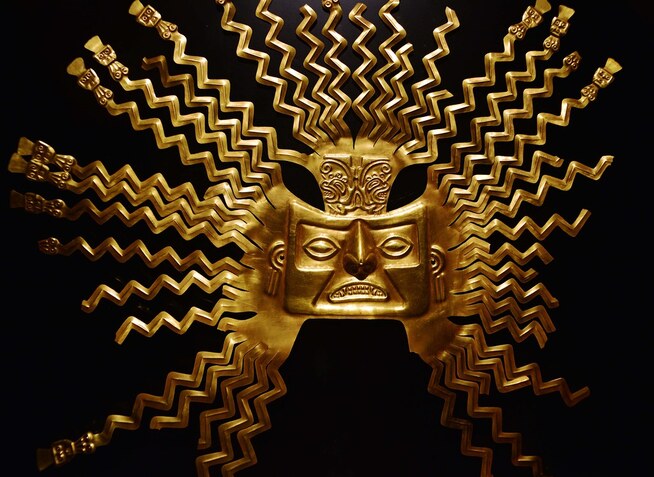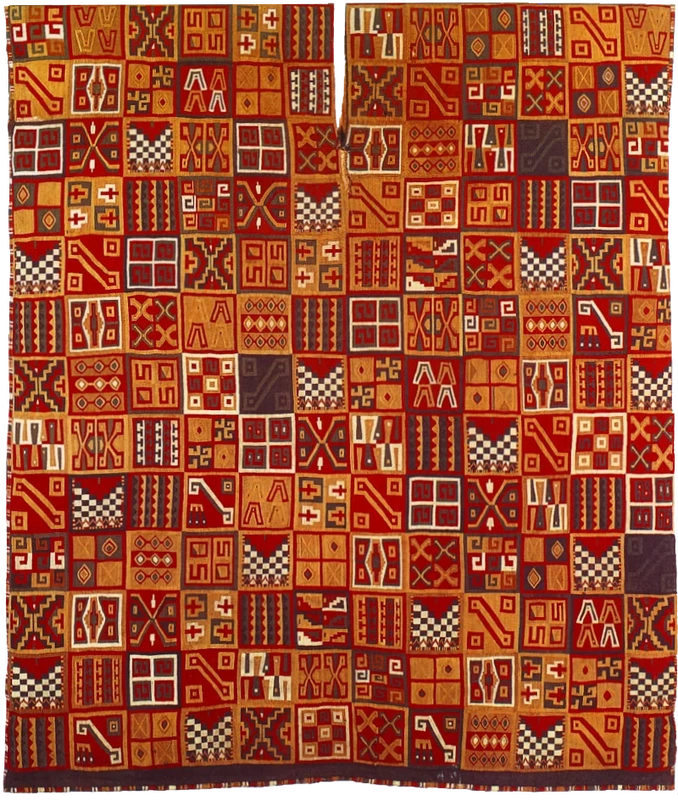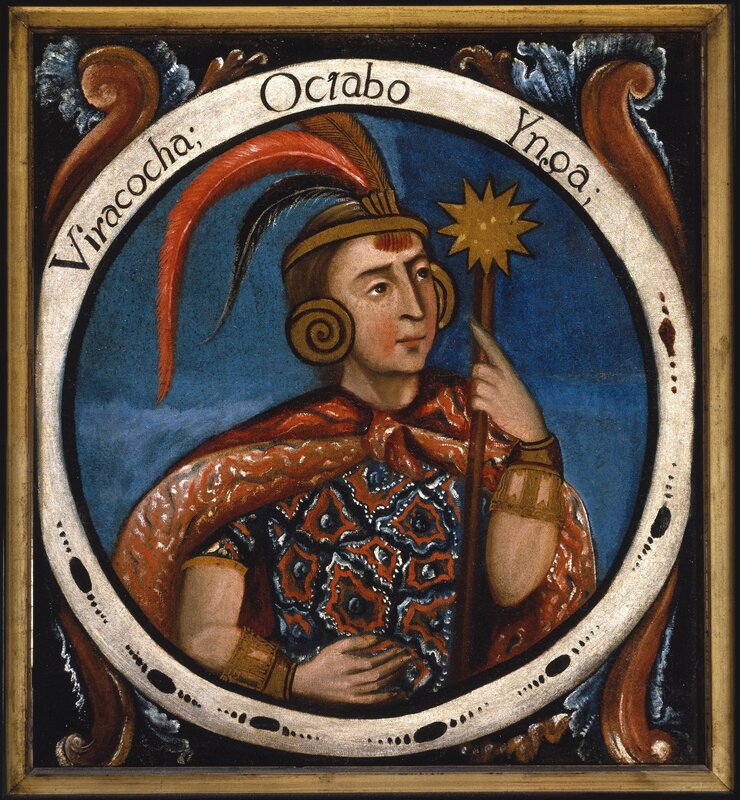Ataliba, The Inca King
Designed by Howard Tsvi Kaplan
Production: Giuseppe Verdi's Alzira
Collection of Sarasota Opera Association, Inc.
Production: Giuseppe Verdi's Alzira
Collection of Sarasota Opera Association, Inc.
About the Character
Ataliba was based on a character in a 1777 novel The Incas or the Destruction of the Empire of Peru by French historian Jean-François Marmontel (1723-1799). In the story, Alonso, a conquistador, assists the Incan ruler in vanquishing his enemies. In return, Ataliba offers his sister as a bride to Alonso. Alonso, however, falls in love with a virgin of the sun temple and operatic high drama ensues. The story is complete with an erupting volcano, and the Peruvian backdrop would have been seen as fantastic and exotic by audiences in an era when few Europeans had traveled to the Americas.
Several versions of the Marmontel story were adapted for the opera stage in the 1780s. Giuseppe Verdi’s two-act Alzira was based not on Marmontel’s story but on a play by the famous French philosopher Voltaire. Verdi’s title character is the daughter of Ataliba, not the king’s sister. The original Alzira was performed by the Italian soprano Eugenia Tadolini (1809-1872).
Alzira is considered an obscure early work among Verdi’s long list of popular operas. It saw few performances after its premiere in Naples in 1845. The opera was far from a commercial success and resulted in some of the worst press Verdi had seen during his lifetime.
About the Costume
In 1989, Sarasota Opera began the ambitious task of performing all of Verdi’s operas. To date, Sarasota Opera is the only opera company in the world to have performed all of Verdi’s works. The current costume was designed by Howard Tsvi Kaplan for Sarasota Opera’s production of Alzira in 2000. The role was performed by American bass vocalist Daniel Cole. Elements of the costume include authentic Peruvian copper and other decorative pieces. The breastplate is made of ostrich hide and the belt was created using the skin of a snake.
If you step around to the backside of the costume and look closely at the bottom of the cloak, you will discover two stylized owls made of feathers. The costume also includes turquoise, which was a prized stone among Indigenous Americans. The ostrich hide armor is laced from the back side with strings of leather. Costumes such as these require assistants to properly dress the performer.
Inspiration
The Incan empire disappeared in the mid-16th century under the colonial invasion by Spain. Accurate images of Incan rulers are few so the costume designer must piece together a vision based on various sources. Before scholarly research, Western interpretations of Indigenous American cultures often ranged from the ridiculous to the bizarre. For Howard Kaplan’s 21st-century look at ancient Peru, the designer drew from existing resources to create something that is not only dramatic and visually stunning, but connected directly to the culture it represents.
One of the most important gods in Incan mythology was Inti. Inti represented the sun and, much like ancient Egyptian culture, was believed to be the ancestor of the Incan rulers. The sun represents light and is therefore the protector of the people, a fitting symbol for a ruler.
The main textile of this costume was created out of Thai fabric. However, it closely resembles the patterns and colors of an authentic Incan tunic, pictured below.

